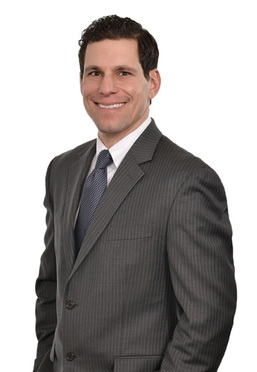How $1B in Design Patent Damages Became $400M (And May Soon Become Less)
Apple will soon return to court to continue its legal battle with Samsung over Samsung's infringement of Apple's iPhone design. The latest chapter of this saga concerns the proper methodology for calculating damages that Samsung must pay to Apple for infringing Apple's design patents.
January 30, 2018 at 02:04 PM
8 minute read

Apple will soon return to court to continue its legal battle with Samsung over Samsung's infringement of Apple's iPhone design. The latest chapter of this saga concerns the proper methodology for calculating damages that Samsung must pay to Apple for infringing Apple's design patents.
As background to this case, a jury trial in the Northern District Court of California back in 2012 resulted in a verdict ordering Samsung to pay Apple more than $1 billion for willfully infringing Apple's design patents. The damage calculation was based upon 35 U.S.C. 289 of the Patent Act. Section 289 includes a special profit-disgorgement provision for design infringement damages requiring that “Whoever during the term of a patent for a design … sells or exposes for sale any article of manufacture to which such design or colorable imitation has been applied shall be liable to the owner to the extent of his total profit.”
Traditionally, the “article of manufacture” under Section 289 was considered to be nothing less than the entire product regardless of how little of the product was actually shown in the design patent. In other words, even if the design patent covered only a portion of a product, the damages awarded would still be the total profit for the entire product. Apple's damage award was calculated in the traditional way, i.e., based on the value of the entire smartphone rather than just the value of the features of the smartphone that are shown in the design patent. Apple's design patents at issue cover (only) an electronic device with a rectangular front face and a matrix of icons on a screen. Apple's design patents at issue do not cover the design of the rear bezel, the buttons or the internal electronics.
Over the past several years the $1 billion damages order has been whittled down to about $400 million as a result of various legal maneuvers made by Samsung. In its latest maneuver to further reduce the $400 million damages figure, Samsung challenged the traditional methodology for calculating damages under Section 289. More particularly, Samsung filed a petition for certiorari to the U.S. Supreme Court alleging that Apple's design patents at issue cover only specific, limited portions of a smartphone's design, and the district court improperly “allowed the jury to award Samsung's entire profits … no matter how little the patented design features contributed to the value of Samsung's phones.” The Supreme Court, which had not heard a case involving design patents since 1894, granted Samsung's petition.
The question before the court was “Where a design patent is applied to only a component of a product, should an award of infringer's profits be limited to those profits attributable to the component?” The court answered that question in the affirmative. Ruling in favor of Samsung, the court held that “the term 'article of manufacture' is broad enough to embrace both a product sold to a consumer and a component of that product.” In other words, the “article of manufacture” of Section 289 can encompass a portion of a product, and the damage award should be based on that portion of the product, and not the entire product. The court's ruling was especially significant in that it overturned the century old method by which design patent damages were calculated.
According to the court, the entire phone itself was not necessarily the right “article of manufacture” to consider in the damages analysis. The court declined to provide the right “article of manufacture” for the lower court to consider. Instead, the court provided a new two-step inquiry for determining an award of damages under Section 289, and remanded the case for further consideration.
The first step of the inquiry crafted by the court involves identifying the relevant article of manufacture to which the infringed design has been applied. The relevant article of manufacture may be either an entire product or a component of that product. Although the court declined to lay out a methodology for the first step of the inquiry, the court noted that the Justice Department had provided a four factor test in its amicus brief. Once the relevant article of manufacture has been identified, the second step of the inquiry involves calculating the infringer's total profit attributed to that article of manufacture.
On remand, the district court judge ordered a new trial to determine the appropriate damage award that Samsung must pay for infringing Apple's design patents. The parties will return to court in May to make their arguments, and the jury will have to first identify the article of manufacture, and then calculate Samsung's total profit attributed to that article of manufacture. This is no simple feat.
Columbia Sportswear v. Seirus was the first post-Apple verdict on design patent damages. In Columbia, a California jury was asked to determine the damages that Seirus should pay based on their infringement of Columbia's design patent covering the ornamental design of heat reflective material in clothing. Consistent with the Supreme Court's opinion in the Apple case, the jury was instructed to identify the article of manufacture and to then determine Seirus' profit on that article of manufacture. To identify the article of manufacture, the jury was instructed to consider the same four factors that were originally outlined by the Justice Department in the Apple case. The four factors include the scope of the design in the design patent; the relative prominence of the design within the product as a whole; whether the design is conceptually distinct from the product as a whole; and the physical relationship between the patented design and the rest of the product.
While Columbia's patent only pertained to a component part of a product, the jury nevertheless identified the whole product as encompassing the article of manufacture, and awarded Columbia all of Seirus' profits for the infringing sales.
Turning back to the Apple case, the district court judge has already ordered the parties to brief the four-factor test. What follows is a potential scenario of how the jury will consider each factor. For the first factor related to the scope of the design, the jury may side with Samsung in finding that the scope of the design in the design patent is less than the entire electronic device because some features of the device are disclaimed by broken lines in the design patent and other features are not shown at all in the design patent, such as the hardware and software. For the second factor related to the prominence of the design, the jury may side with Apple in finding that the claimed portion of the design (i.e., an electronic device having a rectangular front face and a matrix of icons on a screen) is a highly prominent feature of the design within the product as a whole. It seems likely that the rectangular front face and icons will be regarded as both important and prominent. Consider for a moment what cellular phones looked like prior to the introduction of the iPhone. For the third factor related to whether the design is distinct from the product as a whole, the jury may side with Apple on this factor since the patented design is directed to the overall look of the device and not just one individual feature of the device, such as an icon, for example. For the fourth factor related to the physical relationship between the patented design and the rest of the product, it seems more likely that the jury will side with Apple since the patented design is directed to the overall look of the device and the overall look is not physically separable from the remainder of the design.
Balancing these factors in this hypothetical scenario, it is likely that Apple's damages will be reduced, but only by a minimal amount, considering that Apple's patented design covers the overall look of the smartphone and not just a separable or trivial feature of the smartphone. Stay tuned!
Brett J. Rosen, an associate at RatnerPrestia, focuses his practice on all aspects of intellectual property (IP) protection and enforcement with an eye toward helping clients achieve their business objectives. Since joining the firm in 2004, his experience has spanned the various stages of the IP life-cycle, from the acquisition of IP rights to the enforcement of those rights.
This content has been archived. It is available through our partners, LexisNexis® and Bloomberg Law.
To view this content, please continue to their sites.
Not a Lexis Subscriber?
Subscribe Now
Not a Bloomberg Law Subscriber?
Subscribe Now
NOT FOR REPRINT
© 2025 ALM Global, LLC, All Rights Reserved. Request academic re-use from www.copyright.com. All other uses, submit a request to [email protected]. For more information visit Asset & Logo Licensing.
You Might Like
View All


AI and Social Media Fakes: Are You Protecting Your Brand?

Neighboring States Have Either Passed or Proposed Climate Superfund Laws—Is Pennsylvania Next?
7 minute readTrending Stories
- 1Data Breaches in UK Legal Sector Surge, According to ICO Data
- 2PayPal Faces New Round of Claims; This Time Alleging Its 'Honey' Browser Extension Cheated Consumers
- 3Fired NLRB Member Seeks Reinstatement, Challenges President's Removal Power
- 4NY Inspector General Announces Attorneys Hired to Lead Upstate Region and Gaming
- 5Carol-Lisa Phillips to Rise to Broward Chief Judge as Jack Tuter Weighs Next Move
Who Got The Work
J. Brugh Lower of Gibbons has entered an appearance for industrial equipment supplier Devco Corporation in a pending trademark infringement lawsuit. The suit, accusing the defendant of selling knock-off Graco products, was filed Dec. 18 in New Jersey District Court by Rivkin Radler on behalf of Graco Inc. and Graco Minnesota. The case, assigned to U.S. District Judge Zahid N. Quraishi, is 3:24-cv-11294, Graco Inc. et al v. Devco Corporation.
Who Got The Work
Rebecca Maller-Stein and Kent A. Yalowitz of Arnold & Porter Kaye Scholer have entered their appearances for Hanaco Venture Capital and its executives, Lior Prosor and David Frankel, in a pending securities lawsuit. The action, filed on Dec. 24 in New York Southern District Court by Zell, Aron & Co. on behalf of Goldeneye Advisors, accuses the defendants of negligently and fraudulently managing the plaintiff's $1 million investment. The case, assigned to U.S. District Judge Vernon S. Broderick, is 1:24-cv-09918, Goldeneye Advisors, LLC v. Hanaco Venture Capital, Ltd. et al.
Who Got The Work
Attorneys from A&O Shearman has stepped in as defense counsel for Toronto-Dominion Bank and other defendants in a pending securities class action. The suit, filed Dec. 11 in New York Southern District Court by Bleichmar Fonti & Auld, accuses the defendants of concealing the bank's 'pervasive' deficiencies in regards to its compliance with the Bank Secrecy Act and the quality of its anti-money laundering controls. The case, assigned to U.S. District Judge Arun Subramanian, is 1:24-cv-09445, Gonzalez v. The Toronto-Dominion Bank et al.
Who Got The Work
Crown Castle International, a Pennsylvania company providing shared communications infrastructure, has turned to Luke D. Wolf of Gordon Rees Scully Mansukhani to fend off a pending breach-of-contract lawsuit. The court action, filed Nov. 25 in Michigan Eastern District Court by Hooper Hathaway PC on behalf of The Town Residences LLC, accuses Crown Castle of failing to transfer approximately $30,000 in utility payments from T-Mobile in breach of a roof-top lease and assignment agreement. The case, assigned to U.S. District Judge Susan K. Declercq, is 2:24-cv-13131, The Town Residences LLC v. T-Mobile US, Inc. et al.
Who Got The Work
Wilfred P. Coronato and Daniel M. Schwartz of McCarter & English have stepped in as defense counsel to Electrolux Home Products Inc. in a pending product liability lawsuit. The court action, filed Nov. 26 in New York Eastern District Court by Poulos Lopiccolo PC and Nagel Rice LLP on behalf of David Stern, alleges that the defendant's refrigerators’ drawers and shelving repeatedly break and fall apart within months after purchase. The case, assigned to U.S. District Judge Joan M. Azrack, is 2:24-cv-08204, Stern v. Electrolux Home Products, Inc.
Featured Firms
Law Offices of Gary Martin Hays & Associates, P.C.
(470) 294-1674
Law Offices of Mark E. Salomone
(857) 444-6468
Smith & Hassler
(713) 739-1250





